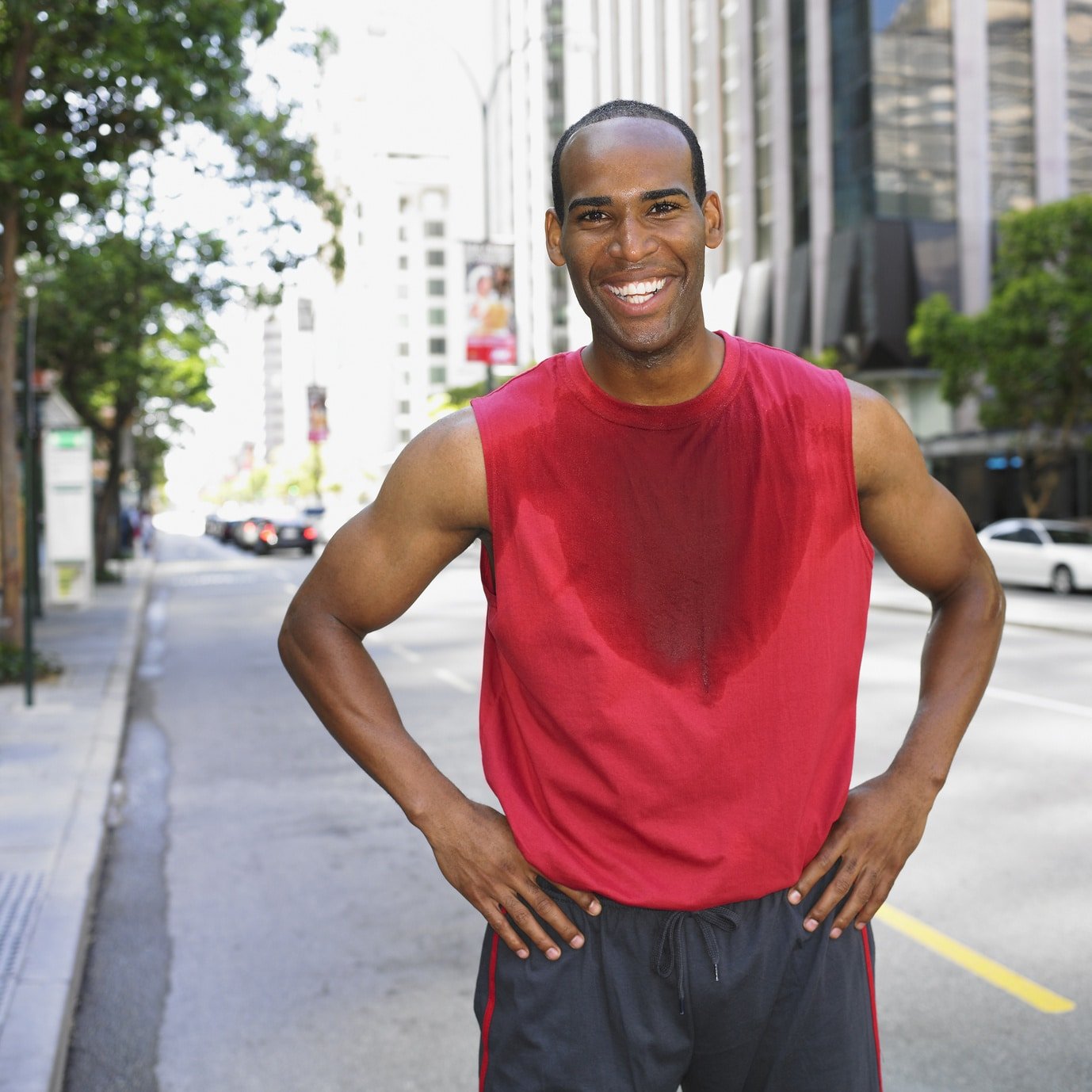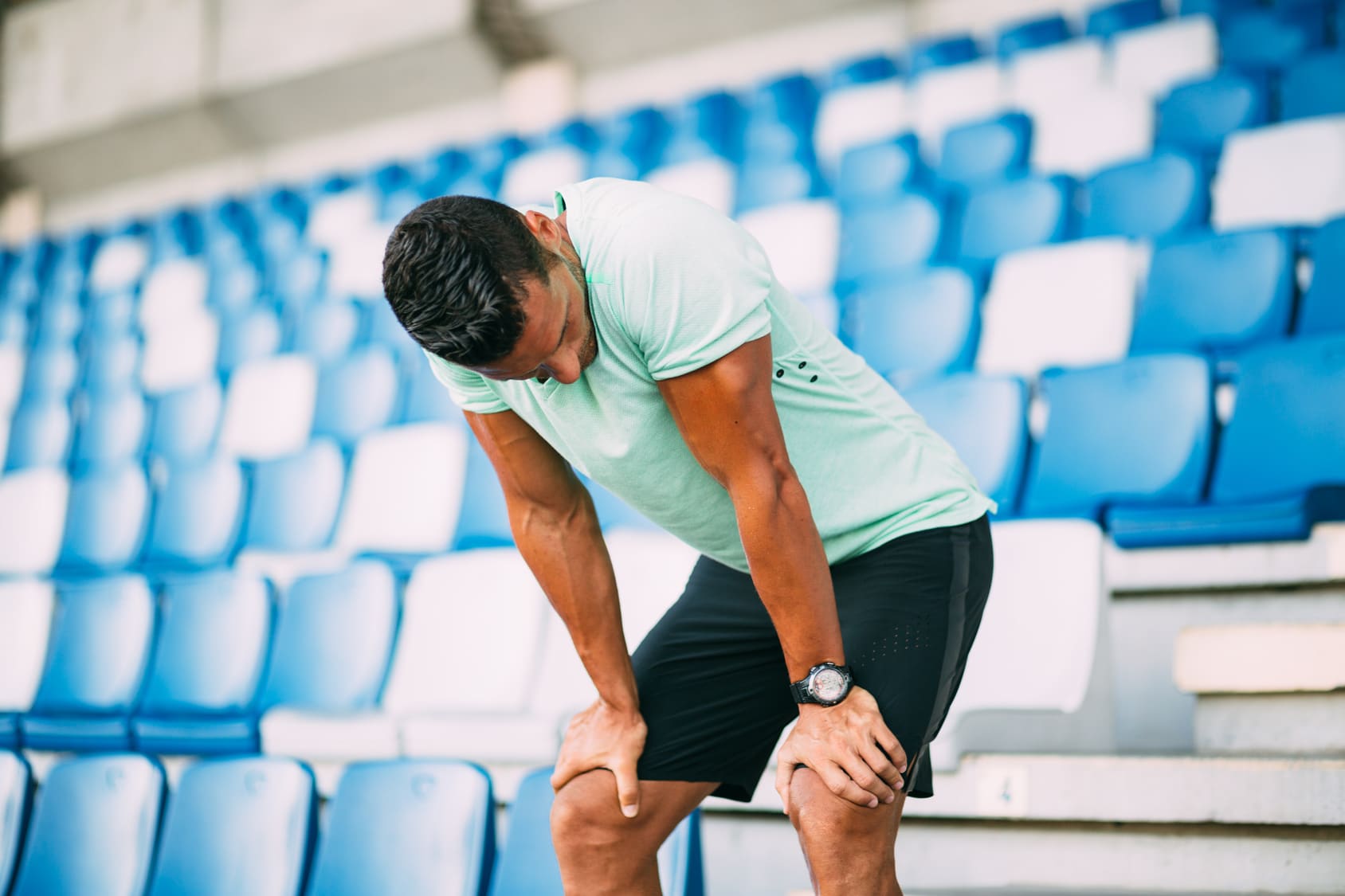Looking for the best advice on how to get smell out of running clothes? Then you’ve come to the right place.
Log in a couple of sweaty runs, and you’ve shirts, shorts, socks, and underwear that smell like a locker room.
That’s why figuring out how to get the smell out of running clothes is one of the biggest of all training mysteries.
If you’re a runner dealing with stinky workout gear, then, you’ve come to the right place.
In today’s post you’ll discover the exact steps you need to remove the sweat smell and nasty odors from running shirts, shorts, and other training clothes the easy way.
But first things first, let’s discuss why running clothes can stink so badly.
The Source of The Stink
Bad smells, be it coming from garbage cans or bad breath, is the by-product of bacteria, in one form or the other.
Generally speaking, a good wash is all that’s needed to remove the bacteria from your casual clothing.
But it’s not always the case when it comes to high performance fabrics.
So, why do running clothes tend to hold onto smells even after being washed?
Blame the Technology
The stinky odor can be blamed on the bacteria found on your skin that get trapped in the fabric fibers.
But isn’t regular washing supposed to take care of that?
That’s actually when things go awry.
High-performance clothing designed specifically for running are usually made with high-performance stretchy materials—typically of smooth synthetic tubes—think fishing line. This helps divert water and allows for sweat to evaporate off the skin, keeping your body dry and comfortable.
But here’s the downside.
High-performance fabrics may have extra crannies and nooks that cling to dirt and odors. And the typical washing process usually has a hard time getting penetrating those grooves.
That’s why synthetic materials—such as Supplex, Lycra, Coolmax, Dri-fit, Climacool, and Tactual—can turn into stink magnets.
If it seems like you can never quite the funky smell out of your favorite workout tops, you ‘re probably right—your workout gear is working against you.
Don’t Hesitate to Wash
Keeping your running kit in a pile or letting it sit in a hamper after a run encourage the bacteria to grow and for the smell to linger and get worse.
And The longer your precious workout kit stays dirty, the more difficult to remove the smells.
Make it a rule never to let your running gear stew in its stench. Once you get home after a workout, remove your kit as soon as possible (or take it out of the bag) and dry it quickly.
Not doing laundry right away? Hang them up or lay them on a drying rack so they can breathe in the fresh air before laundry day.
Air Them out
Your first line of defense against the smelly odors is to expose your running clothes to natural air as soon as you are done running.
If you keep your clothes in an enclosed space, your clothes will become a breeding ground for bacteria.
In fact, the longer you keep your workout clothes in an enclosed area, the more intense your running clothes may smell.
But it’s not the whole story.
Doing this can also wear down the fabric of your clothes, contributing to a faster deterioration of your running garments.
And I’m assuming that you don’t want that.
Therefore, in case you are not planning on washing your running clothes right away following a workout, make sure to put them where they can air out instead of tossing them on the floor of your bathroom or in your laundry hamper.
For the best results, hang your clothes outside, on a drying rack if it’s available.
If it’s not the case, then the side of a laundry basket can do the trick.
Ease up on the Detergent
Most people believe that more detergent is good.
But in reality, it’s worse.
Why?
Well, most washing machines have a standard cycle that’s set to handle a set amount of the stuff. Thus, any excess of it does not get washed out. Instead, it ends up lingering on your clothes, causing all sorts of trouble.
This builds up on your clothing, trapping mold and mildew— creating an ideal breeding environment for bacteria.
As a result, to err on the side of caution, opt for half or three-quarters of the amount of detergent you typically use. Then do a sniff test to assess how things are going.
Or at least, wash your running clothes with a detergent that’s specially designed to handle fitness and sports clothing.
Some of the best brands include Tide plus Febreze Freshness Sport, and Win High-Performance Sports Detergent (Get it here on Amazon).
You can also add in an anti-odor in wash eliminator. One effective product to try out is Febreze In-Wash Odor Eliminator. ( Get it here on Amazon).
Skip the Fabric Softener
What you need to watch for, when it comes running clothes, is fabric softener.
In fact, I’d go as far as to say that fabric softener is your running gear’s worst enemy.
Instead of cleaning the clothes, fabric softeners can, in fact, create a sort of fence that traps rotten smells in. This also keeps detergent and water from penetrating those grooves for a thorough wash.
Not only does it make your running clothes stink, but it also ruins the way they fit. Fabric softeners tend to break down any materials that stretch—the building blocks of technical workout attire.
Henceforth, whether in the form of sheets or liquid, you don’t want to this stuff near your running clothes. Or, at least, go for detergents that are free of dyes or fragrances.
For the odor, try adding half a cup of white vinegar to your wash cycle (for more on how to do that, check tip No. 5).
Pre-Soak Your Running Gear
This is another simple, yet overlooked, step that can help tremendously with the stinky smells.
Before you toss your workout clothes into the wash, presoak them in four parts cold water and one part white distilled vinegar for 30 minutes.
White vinegar has a very low level of acid that cuts through the stubborn bacteria and releases it to be flushed away during the wash.
Wash your Clothes ASAP
This might sound redundant, but if your running clothes are drenched in sweat following a workout, then you gotta wash them immediately.
Do not let your workout clothes steep. That’s the Cardinal Rule.
Action Steps
Here are the three guidelines you need for a perfect wash:
(1) Use your hands
In case you don’t have a washing machine nearby, then hand wash them.
In fact, in my experience, this might be the best thing you can do to fight off the smells, be rid of those pesky stains, and prolong the lifespan of your garments.
(2) Flip Them
Flipping your running kit—especially leggings—inside out while washing give direct detergent access to the smelliest and dirtiest parts of the fabrics. These are the areas in direct contact with your skin, and the breeding ground for bacteria.
What’s more?
By exposing the inside of your running kit to all that pilling and ripping while protecting the exterior.
(3) Wash them Separately
If you want to save your other casual clothing from the smell, then PLEASE wash your regular clothing separately.
In fact, even if you followed the plan I’m sharing with you to the letter, some stubborn smells are there to stay.
So please don’t pass it on to your work or casual clothing.
Also, do not combine two (or more) people’s smelly workout clothes. Otherwise, neither set would end up smelling fresh.
Use the Right Amount of Laundry Detergent
Using too much of detergent with hoping the more the merrier may backfire on you.
The excess stuff will only build upon your workout gear, which will then trap dead skin and foster fungus. Ick!
Whether you’re using plain old Tide, or special sports detergent (like Nathan’s Sports wash), it’ important to add the right amount to your washing machine.
I’d recommend using no more than two teaspoons of high performing brands, like Persil, Wish, or Tide, per full load. This is often more than enough per a load of laundry.
For more, try adding half a cup of baking soda to your laundry during the rinse cycle to help remove the odors.
Additional resource – How to clean running shoes
Add Vinegar
A powerful solution I found to be super helpful when it comes keeping my running clothes smelling fresh is to soak them in white vinegar just before washing them.
Actually, this might be the miraculous cure you need for getting rid of the smells altogether.
Here is how to do the vinegar pre-wash tactic:
First, soak your workout clothes in a clean kitchen sink with one part white vinegar and four parts cold water, then let the stuff chill for at least a half an hour. This is going to disinfect and loosen the stains before the wash.
Next, proceed with the washing—whether manually or using a washing machine.
For more, you can also add one cup of white vinegar to your wash during the rinse cycle.
If you are trying to get rid of a huge stink, then feel free to up that to two cups.
6. Hang Them to Dry
Most running clothes is what you may call tech gear. They are made from special fabric that insulates heat, wicks moisture away, you know the drill…
Thus, you should never toss them in the dryer.
In fact, high heat will cause shrinkage or damage to your gear, shortening its lifespan in the process. And you don’t want that.
So, what is the best course of action?
The best way to dry technical fabric is to hang dry them. So please, if you have a drying rack in your bath, then let them dry there.
Or if it’s possible, put your running clothes where they can dry in direct sunlight.
In fact, the sun’s rays naturally deter the growth of bacteria and will zap stains and odors right out of the clothing, keeping them cleaner and smelling fresher for longer.
In case it’s not possible for you to air dry your workout clothes, then put them in the dryer, opting for the lowest heat setting on your dryer possible. This will save the elastic and won’t cause much shrinkage or damage to your clothes.
Still, I’m really against this. But desperate times call for desperate measures.
Additional Resource – Here’s how to dry running shoes.
New to Running? Start Here…
If you’re serious about running, getting fit, and staying injury free, then make sure to download my Runners Blueprint Guide!
Inside this guide, you’ll learn how to start running and lose weight weight the easy and painless way. This is, in fact, your ultimate manifesto to becoming a faster and a stronger runner. And you want that, don’t you?
Click HERE to check out my Runners Blueprint System today!
Don’t miss out! My awesome running plan is just one click away.



